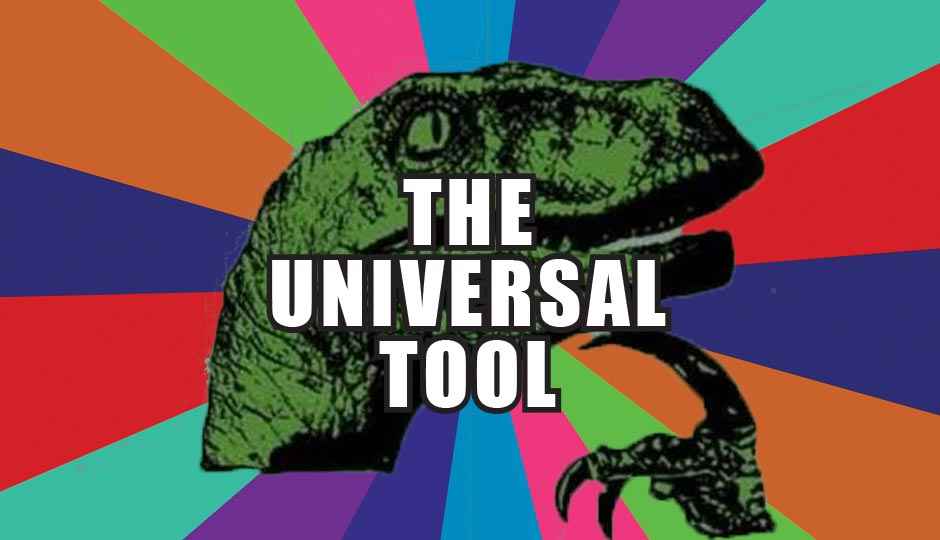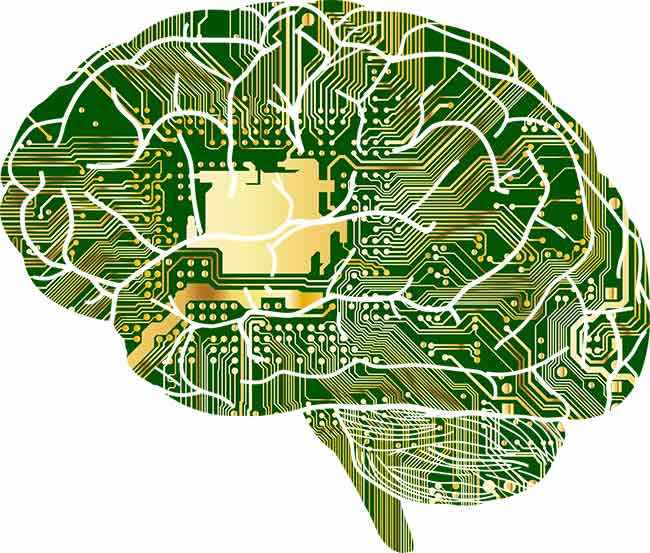Memes could be the key to predicting the future

The last joke you laughed at online can tell you more about the world than you think
A meme is more than just the humorous images that you share online, and in fact, encapsulates any cultural idea or trend that is passed on from person to person. And in case, we got you thinking if there is some underlying phenomenon deeper than what is observable with a cursory glance – hats off to us *cue self back pats*
But the real task lies ahead. There is something deeper and more organic underlying the entire meme culture and internet behavior in general, something that distinguishes what a meme is and at the same time connects all the memes into a single, giant, amalgamate that does way more than offer you your daily dose of humor. To truly grasp this idea, we have to go down the proverbial rabbit hole.
Meme = Gene = Virus ?
While the analogy between memes and genes is surely one that makes it easier to grasp the definition of the meme as given by Richard Dawkins, it is not entirely true, or rather, it is not the entire truth. What comes in handy, though, is an alternative line of thought in memetics – one that perceives the meme as a virus.
Don’t reach out for your hand sanitizers and air purifiers just yet; this isn’t a typical virus we are talking about. This isn’t biological or computerised, at least not in itself. So why do we need to think about it this way? First of all, subscribing to the gene theory is prone to a couple of misconceptions. First, genes don’t spread only through replication. In fact, it is the repeated errors that introduce mutation – a key factor in evolution, the reason you and I exist. A simple exercise in observation and thought tells us that a meme actually exists because of transformation or manipulation of a base idea before it is spread – even if the manipulation is nothing more than the addition of one’s opinion to the idea (Case in point – almost no two meme images that you see online are the same, even if they are based on the exact same meme). Genes mostly replicate unaltered, with a modification or mutation creeping in as a rarity. Memes mutate more frequently. It makes more sense to understand that like the process of evolution with genes, memes actually mutate in majority, and in this mutation lies the key to an evolved, persistent ‘fit’ meme that survives.
Will there be a time when ideas no longer need humans to spread and persist?
While showing why a meme is mostly like a gene is a step in the right direction, it doesn’t get you all the way. A similarity between memes and viruses lies in the way that it behaves with you – the individual, the consumer, the reader. A typical parasite needs a conductive medium to spread – you usually do not catch a cold in the middle of the summer or contract a deadly virus in a squeaky clean locality. And never before has there been a more suitable environment for the spread of ideas than the internet. But even before that, ideas always had their own ways of getting spread around – be it through libraries, public gatherings, entertainment media and more.
A typical virus enters your body, reacts with it, attacks it or alters it, and either gets rejected and quarantined or accepted and forwarded. Just like that, an idea, once it reaches the end point of your mind, either persists there or gets dismissed. In the case of the former, you become the host to that idea, comprehending and interpreting it, in turn changing your own understanding of it. In the end, it is you, the host, that is affected by the idea while the idea still lies out there in its initial ‘unaffected-by-you’ form and also in your own variation of it, in either case looking at being spread further – as Daniel Dennett wonderfully said, “a scholar is a library’s way of making another library”.
The unknown threads?
We cannot get away with establishing that a meme is like a virus and then not explaining how it can behave. Since, undoubtedly, there are specific, underlying rules that govern it and, in turn, you. While not exhaustive, there are some maxims that have been identified which shed some light on this – collectively sometimes referred to as the rules of the internet. Memes create stereotypes, stereotypes create the memes and so on it goes. Just like genes, it is not possible to comprehend the characteristics of a meme in isolation. Genes usually have phenotypic effects in the presence of other genes. Similarly, memes spread in the presence of certain favorable behaviour patterns. And to understand these patterns, one needs to look at the underlying rules mentioned earlier. Keep in mind though, that these rules represent a small part of a much larger system of maxims constantly being modified and updated to reach absolute ideas, so what appears funny to you today, might be a grave and serious truth tomorrow. But for today, these memes inform you of numerous stereotypes and go on to point out how they ideally behave. For instance:
- ‘Forever alone’ is an ironically sad person and if you behave a certain way/do a certain thing, you’re one;
- Trolling is humor, and you’re kind of an uptight jerk if you take it seriously and more;
Don’t get us wrong – stereotypes have always existed. But things work a bit differently when they are spread on the internet. Urban legends have always been a meme, but they are now spread to way more people with access to the internet and receive much more credibility thanks to technology aiding false evidence. For example, Slenderman was a fictional creature created for an online contest in 2009, the mythos of which was further expanded in the years to come. After reading a creepypasta (which itself is simply ‘creepy’ stories copied and ‘pasted’ all over the internet) about him, two 12 year olds in Waukesha, Wisconsin stabbed a third one 19 times to appease the fictional creature and keep their families safe from him. The girl barely survived and the trial is still ongoing. And this was a faceless man who had tentacles coming out of his back.
Urban legends are memes that have been taken a bit too seriously
If you’re pondering on why they would do that, the 1% rule of the internet in combination with Poe’s law (both being part of the maxims that were referred to earlier, mentioned in separate box) makes it much easier to understand that a fake idea, no matter how outrageous it might be, if presented well on the internet (i.e without the obvious disclaimers that Poe’s law specifies) might just be perceived as gospel truth. If you use a meme to describe a person repeatedly, at one point of time there will be people who would have formed that opinion about that very person, without verification. But you don’t have to reach out to a lesser known case to see this in action.
What if I told you that it actually works?
We’ve all heard the statement ‘Don’t feed the trolls’, or one of its modifications (once again, a meme) and have generally accepted it as the right course of action against the spreading of obvious misinformation or plainly stupid arguments – for example, comparison to Nazis as outlined in Godwin’s law. But this has led to a very interesting phenomenon that has impacted one of the most important events in recent times – the 2016 Presidential Election.
Without memes, there might have been a completely different person in the oval office right now
The general consensus (online) about the alt-right (or conservatives or whatever you might call the side that won) was that their arguments are silly, baseless and easily seen through A.K.A trolling. Hence the widespread reaction to those very arguments was outright dismissal. But not doing anything about that eventually led to the general populace of the country into believing the satire-laden trolling to be genuine facts in most cases. Just like how Facebook’s fake news problem, triggered by switching trending topics to a purely algorithmic process from human curation, was unable to distinguish baseless trends from genuine news and ended up influencing a lot of people. If this does not instate the validity of Poe’s law, we don’t know what will.
On the other hand, outright denial or declaration of your victory online also loses you any argument that you might be involved in because of the exact same reasons. Danth’s law (see box) comes into action more often than you think it does, and if you stay behind to check whether your declaration has been accepted by others in the argument or not, even after you’ve declared you’re leaving, you’d be fulfilling Shaker’s law. Still believe that there isn’t an unseen set of rules that govern the memes, and your, behaviour?
The Rules of the Internet |
|
While some of the maxims that apply to the internet have been mentioned in the article, here is an expanded list of what we believe to be the governing rules of online behavior: Badger’s Law Danth’s Law Godwin’s law Poe’s Law Rule 34 Skitt’s law Law of Exclamation Cohen’s Law Shaker’s Law Skarka’s Law Shank’s Law Wiio’s Law Sturgeon’s Law The 1% Rule Cunningham’s Law |
Meme – The universal tool
While most of our mental schema is wired to keep us focussed and occupied with what’s at hand, memes, with their inherent imageability and repetitive nature, help us process abstractions faster. While this is beneficial, abstraction also leads to an unavoidable problem: we begin to view memes as concrete units, where they are not. This is what lets us be able to wage an actual war against an abstract idea (‘terrorism’) or a particular class of chemical compounds (‘drugs’). This leads to belief systems that are not entirely robust against questioning or dire situations, in which we unconsciously propagate those very memes. And generally, these are simple, catchy, easy-to-grasp ideas – just because they are easier to retain and rehearse.
Acknowledging the meme in its true form – as a connected pseudo-organism that influences individual, and in turn, social behaviour can be more beneficial than you think. As an analogy, the first step you take against a virus outbreak is acknowledge that there is an outbreak. It’s just that in this case, the outbreak can be controlled to influence certain people in certain ways. And these unseen rules, which perhaps now you’ll be more perceptive to benefit the understanding, hence predictability, of how memes behave. This underlying system, this blueprint to the organism that now lies on the fringes of awareness when it comes to the general populace, will someday be viewed as what shaped the world as we will know it.
This article was first published in March 2017 issue of Digit magazine. To read Digit's articles first, subscribe here or download the Digit e-magazine app for Android and iOS. You could also buy Digit's previous issues here.







